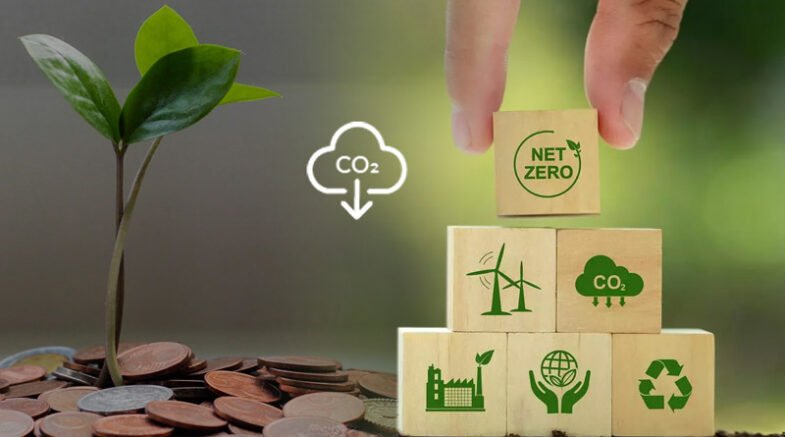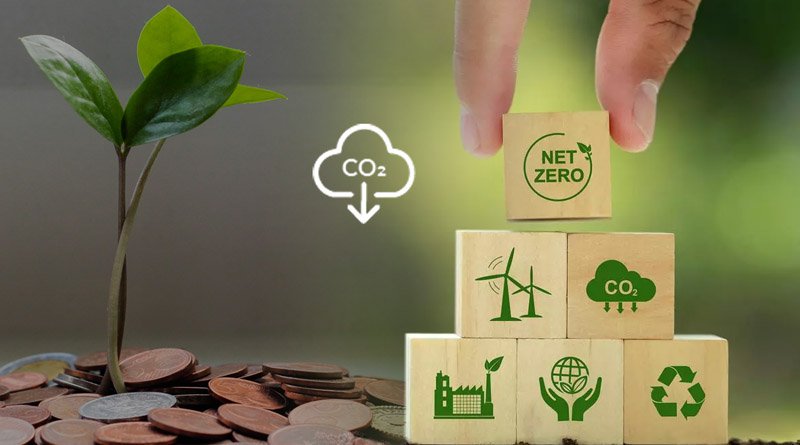The key changes agreed to this week include a steepening in the planned drop-off rate of total EU emissions by 2030 and the phasing out of free permits for certain heavy polluters.

The EU approved changes to its emissions laws and carbon trading scheme, raising the cost of industrial pollution and generating billions of euros for the energy transition. With financial incentives to reduce pollution and penalties for high emitters, the EU’s Emissions Trading System (ETS) is the primary tool for managing emissions in the area.
The recent flurry of lawmaking, along with other recent legislation that imposes levies on imported carbon-heavy goods like metals, fertilisers, and cement, and extends emissions caps to the transportation sectors, represents a significant strengthening of Europe’s emissions management tools.
The policy decisions, which are the result of two years of heated discussion and compromise among the EU’s 27 members, have been hailed by lawmakers as a crucial step towards achieving Europe’s emissions reduction targets and facilitating the successful transition of important industries away from the use of fossil fuels.
However, the new laws and regulations will also put additional strain on some businesses in Europe that are still recovering from the energy shock brought on by Russia’s invasion of Ukraine in 2022.
Additionally, they could worsen relations between EU members, particularly Poland and Hungary, which opposed the reforms to the carbon market.
The key changes agreed to this week include a steepening in the planned drop-off rate of total EU emissions by 2030 and the phasing out of free permits for certain heavy polluters.
Shipping firms will now fall under the scope of the Emissions Trading System for the first time, and emissions from Europe’s buildings, road transport systems, and other smaller industries will come under a new trading scheme that will kick in in 2027 or 2028, depending on regional power and fuel costs. These changes will affect virtually all major segments of Europe’s economy.
Many important industries, including the manufacturing sector, have already started a rapid decarbonization drive and will profit from the rising amounts of affordable renewable energy that will enter Europe’s electricity grids by 2030.
As a result, businesses and sectors that are primarily powered off the grid may find the cost of complying with the new standards to be manageable. Thanks to significant subsidies for heat pumps and energy-saving infrastructure improvements, many homes and businesses in Western Europe will be in a similar situation, which should lessen the impact of the upcoming emissions limits.
Other significant European industries, such as those that produce chemicals, operate smelting and refining operations, as well as those that produce glass, ceramics, paper and cement, will struggle more to meet the new emissions limits while keeping costs in check.
Due to their high power requirements, many of these industries are difficult to connect to the grid, and it can be difficult to reduce their emissions without investing in costly facility upgrades that could hurt their ability to compete on paper, and global scale.
Similar to this, it will be expensive to meet the new standards for homes, offices, and businesses that currently use fossil fuel boilers or in nations with primarily coal and gas-fired grids.
Using money raised from the ETS and other sources, some financial assistance will be made available for power system overhauls and facility upgrades. However, even for Europe’s massive bureaucracy, ensuring that such support is paid in a fair, quick, and transparent manner will be a huge challenge.
Payouts will also need to take into account changes in subsidy levels for goods and devices that may be used to limit emissions or lower energy demand in various nations, in addition to linguistic differences and different power system configurations.
A new Carbon Border Adjustment Mechanism, which imposes new taxes on goods imported from outside the EU for use by carbon-intensive industries, is another significant component of Europe’s new legislation.
This is done to stop businesses from shifting the most heavily polluting components of their supply chains to regions outside the EU Emissions Trading System catchment area and to make sure they can’t simply outsource the dirtiest production phases to other countries. However, this new mechanism runs the risk of reducing the cost competitiveness of industries that are challenging to decarbonize, like those that produce steel and chemicals.
These industries support extensive and labor-intensive supply chains that may be in jeopardy if the primary production hubs of those industries are unable to remain profitable in the area. These sectors are also significant employers throughout Europe.
These and other risks are well known to European legislators, who tried to address them during the protracted debate period that preceded this week’s policy approvals.
However, as evidenced by Poland and Hungary’s votes against them, along with Belgium and Bulgaria’s abstentions, the new regulations are not broadly supported due to their higher costs and stricter emissions thresholds.
Now, it’s up to European legislators to make sure that many of these new obstacles can still be overcome by important industries without jeopardising the region’s overall economic competitiveness.
